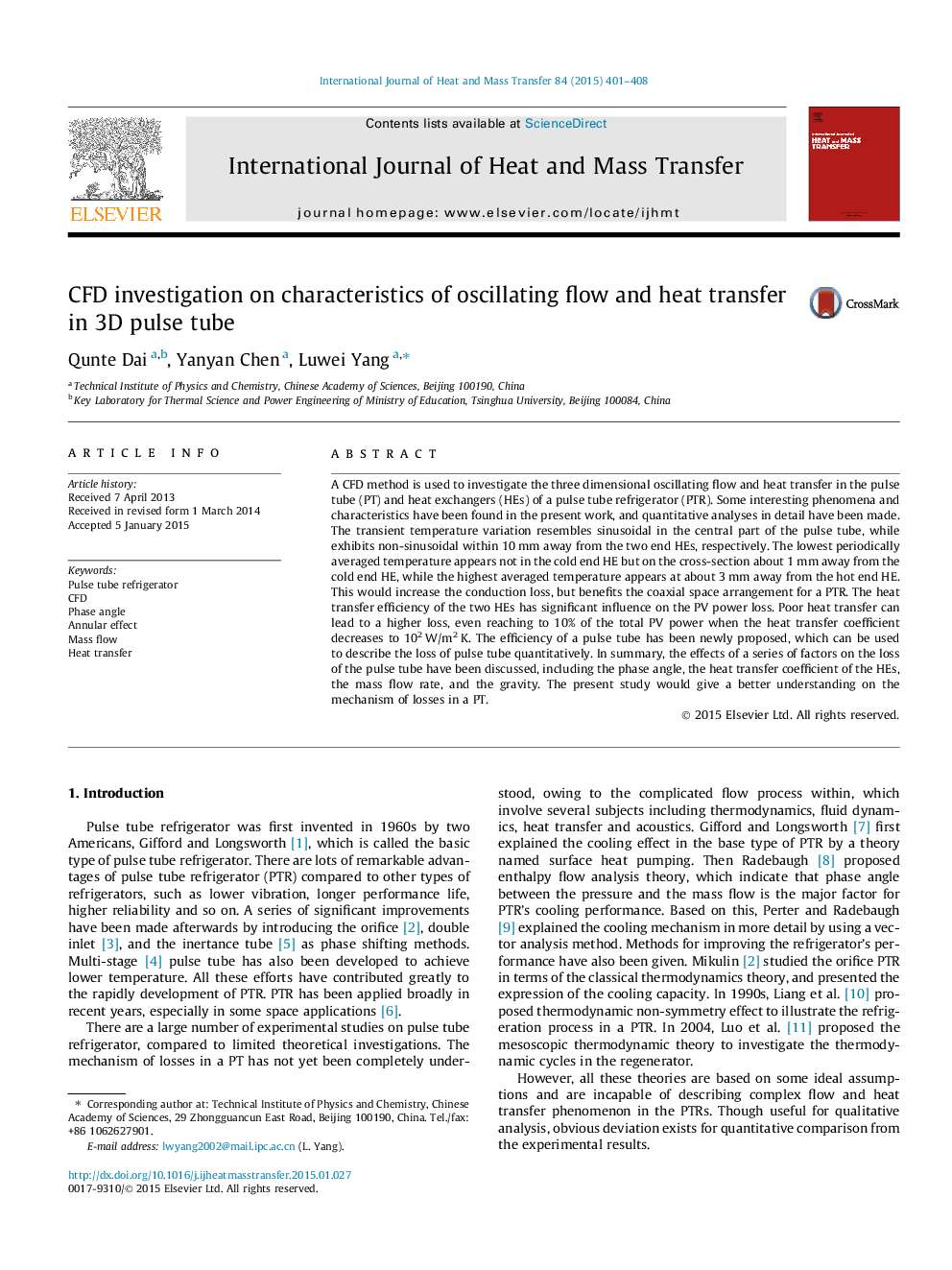| Article ID | Journal | Published Year | Pages | File Type |
|---|---|---|---|---|
| 656931 | International Journal of Heat and Mass Transfer | 2015 | 8 Pages |
Abstract
A CFD method is used to investigate the three dimensional oscillating flow and heat transfer in the pulse tube (PT) and heat exchangers (HEs) of a pulse tube refrigerator (PTR). Some interesting phenomena and characteristics have been found in the present work, and quantitative analyses in detail have been made. The transient temperature variation resembles sinusoidal in the central part of the pulse tube, while exhibits non-sinusoidal within 10Â mm away from the two end HEs, respectively. The lowest periodically averaged temperature appears not in the cold end HE but on the cross-section about 1Â mm away from the cold end HE, while the highest averaged temperature appears at about 3Â mm away from the hot end HE. This would increase the conduction loss, but benefits the coaxial space arrangement for a PTR. The heat transfer efficiency of the two HEs has significant influence on the PV power loss. Poor heat transfer can lead to a higher loss, even reaching to 10% of the total PV power when the heat transfer coefficient decreases to 102Â W/m2Â K. The efficiency of a pulse tube has been newly proposed, which can be used to describe the loss of pulse tube quantitatively. In summary, the effects of a series of factors on the loss of the pulse tube have been discussed, including the phase angle, the heat transfer coefficient of the HEs, the mass flow rate, and the gravity. The present study would give a better understanding on the mechanism of losses in a PT.
Related Topics
Physical Sciences and Engineering
Chemical Engineering
Fluid Flow and Transfer Processes
Authors
Qunte Dai, Yanyan Chen, Luwei Yang,
